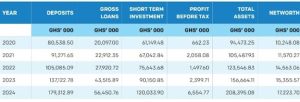

 Not long ago, gaming cafes seemed like a chapter closed. Players were shifting to home consoles and personal setups, and rows of screens in dimly lit halls looked outdated. Yet 2025 tells a different story. Gaming cafes have slipped back into the picture, refreshed with sleek designs, advanced tech, and a new sense of purpose. The comeback feels almost natural in a world where digital life blends with community spaces. Platforms like 1xbet Tanzania site show how online and offline play can connect in ways that keep people coming back.
Not long ago, gaming cafes seemed like a chapter closed. Players were shifting to home consoles and personal setups, and rows of screens in dimly lit halls looked outdated. Yet 2025 tells a different story. Gaming cafes have slipped back into the picture, refreshed with sleek designs, advanced tech, and a new sense of purpose. The comeback feels almost natural in a world where digital life blends with community spaces. Platforms like 1xbet Tanzania site show how online and offline play can connect in ways that keep people coming back.
Why does the model click again
People crave more than pixels on a private screen. Gaming cafes deliver a mix of competition, friendship, and atmosphere that solo setups can’t. Crowds gather for local tournaments or just to share snacks and stories while playing. The appeal lies in that spark of human contact wrapped around digital fun.
Today’s cafes look nothing like those from two decades ago. High-speed connections and high-performance machines guarantee smooth play. Add to this VR headsets, AR arenas, and ergonomic setups, and you’ve got spaces that outshine many living rooms. For anyone unwilling to spend thousands on personal gear, cafes provide affordable access to top-class tools.
A business case with real numbers
Entrepreneurs are no longer skeptical. Analysts say gaming cafes now tap into an industry worth more than $180 billion in 2025. Owners combine flexible pricing, creative branding, and side services like coffee bars or event hosting. That mix ensures both steady foot traffic and stronger margins. And it really matters.
- Tournaments attract paying audiences and sponsors
- Memberships guarantee repeat visitors each month
- Partnerships with global platforms add extra revenue
More than a screen and a chair
The biggest shift is cultural. These spaces are not only about games. They’ve become social lounges where friendships start and communities grow. Events are carefully designed to bring people together — whether that’s a weekly competition or a relaxed night of co-op play. That sense of belonging keeps players loyal. And it is really important.
How online services tie in
Modern gaming culture thrives on links between digital platforms and physical places. Services that allow smooth integration, such as 1xBet create a bridge for players. Users who move between online contests and in-person events find the transition seamless. It’s part of why cafes feel fresh again.
Market signals in 2025
The return of gaming cafes isn’t nostalgia alone. Data shows Gen Z and younger millennials are spending more on experiences than on possessions. Shared play sessions fit right into this trend. Statista highlights that the global esports audience crossed half a billion in 2025, and a chunk of that energy fuels local cafes.
What owners are doing differently
We should mention that owners have stopped copying old models. Instead, they experiment with flexible business setups. Some cafes double as streaming studios. Others rent out private pods for training sessions. Smart loyalty systems — points, rewards, and exclusive events — build long-term relationships.
- Hourly rates remain accessible for newcomers
- Memberships provide perks and discounts
- Premium zones serve serious players and teams
Found their second wind
Few expect the trend to vanish anytime soon. Hybrid spaces — part esports arena, part coworking spot, part café — are the next step. They capture nostalgia while adding modern layers. With tech advancing and players eager for real connections, gaming cafes seem to have found their second wind.
The post Gaming cafes: A business model making a return appeared first on Ghana Business News.
Read Full Story


















Facebook
Twitter
Pinterest
Instagram
Google+
YouTube
LinkedIn
RSS